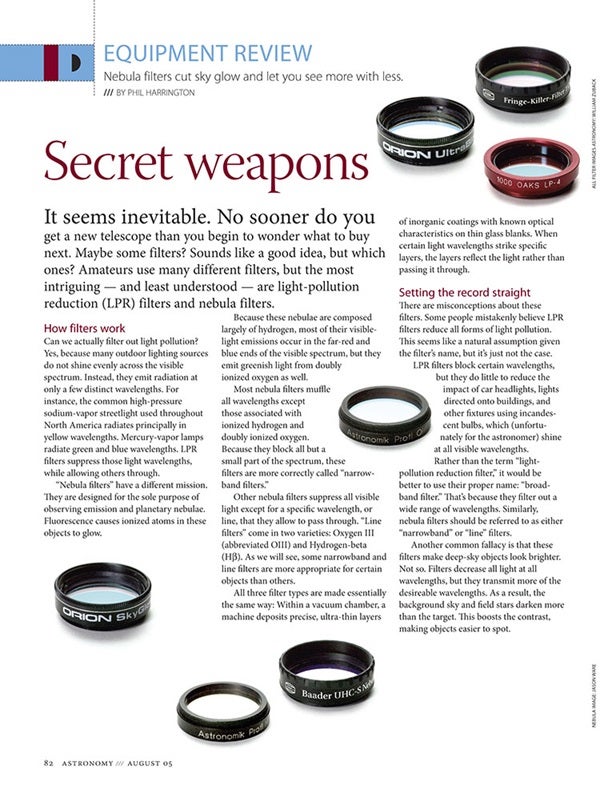
This review, “Secret weapons,” appeared in the August 2005 issue of Astronomy magazine.
It seems inevitable. No sooner do you get a new telescope than you begin to wonder what to buy next. Maybe some filters? Sounds like a good idea, but which ones? Amateurs use many different filters, but the most intriguing — and least understood — are light-pollution reduction (LPR) filters and nebula filters.
How filters work
Can we actually filter out light pollution? Yes, because many outdoor lighting sources do not shine evenly across the visible spectrum. Instead, they emit radiation at only a few distinct wavelengths. For instance, the common high-pressure sodium-vapor streetlight used throughout North America radiates principally in yellow wavelengths. Mercury-vapor lamps radiate green and blue wavelengths. LPR filters suppress those light wavelengths, while allowing others through. “Nebula filters” have a different mission. They are designed for the sole purpose of observing emission and planetary nebulae. Fluorescence causes ionized atoms in these objects to glow.
To continue reading this review you need to be an Astronomy magazine subscriber.
Subscribers have full access to our equipment review archive and many other great online benefits.
Already a subscriber? Simply log in or create an account below.









